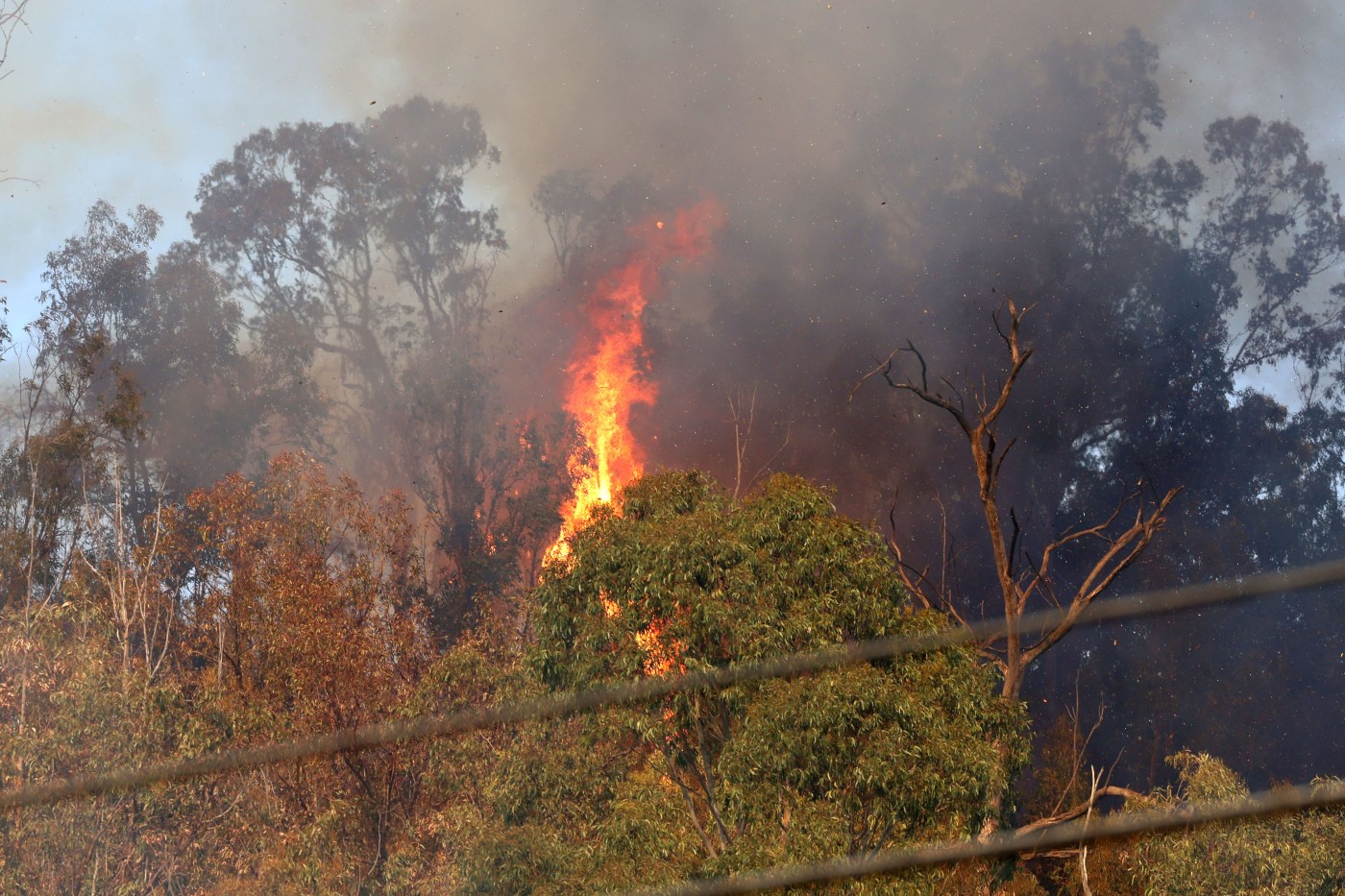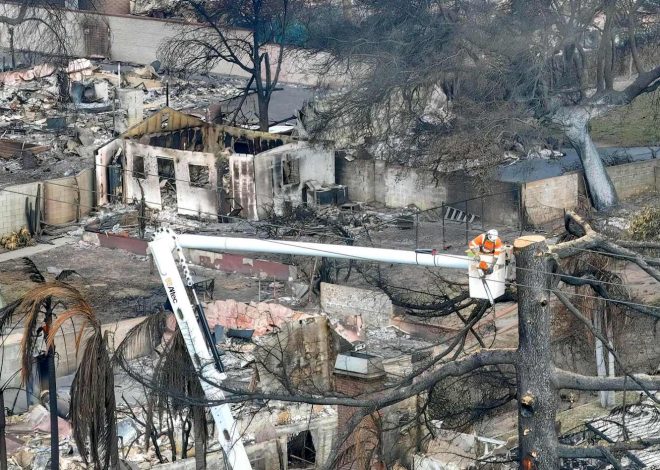
‘We dodged a bullet with that one!’: How did fire crews keep the Keller Fire from exploding?
OAKLAND — One week after the Keller Fire, Damon Covington is eager for the after-action review. Much like a football coach after a win, the Oakland fire chief said he knows there are things to improve, aspects that went well that could go better.
He also knows this.
“We dodged a bullet with that one,” Covington said. “It’s like in sports. With any successful endeavor, there’s a little luck. A couple of things go different, and the result is different.”
Related Articles
East Bay author, illustrator Kaufmann pens new book ‘State of Fire’
Keller Fire in Oakland Hills is about extinguished; hand crews credited for quick containment
Map: Keller Fire in Oakland hills
One dead, two injured in East Bay apartment fire
‘We’re not out of the woods yet’: Crews continue fighting Oakland hills blaze
One week ago, Covington heard a call at 1:27 p.m. for a grass fire burning off Interstate 580. Six minutes later came a second alarm for reports of a fire into a home.
With that, the race started. The Keller Fire was burning amid homes and forestry — in particular a Eucalyptus grove — and red flag warnings for severe fire conditions. The weather mirrored that of a tragic event almost exactly 33 years earlier.
Over the next four days, Oakland fire crews combined with Cal Fire, Alameda County Fire and 20 other agencies to keep the Keller Fire from becoming an awful sequel to the 1991 Oakland Hills Firestorm. In the end, 15 acres burned, residents from 254 structures were evacuated, one home suffered fire damage and not a single person was injured.
To understand how impressive those numbers are, consider that in October 1991, more than 2.5 square miles of acreage burned; 25 people died and 150 were injured; 3,469 homes and apartment units were destroyed, causing $1.68 billion in property damage in Oakland and Berkeley; and 10,000 people were evacuated.
How did fire crews do it?
“A lot of things went right,” said Corey Reuterglen, a division chief at Alameda County Fire who oversaw the work of the hand crews that Covington said played such a pivotal role. “Starting with the fact that the red flag warning (for severe fire conditions) was in place.”
That warning, Reuterglen said, released allocated funds to fire departments in the state that allows crews to pre-position water tenders, fire engines, and hand crews in perceivably dangerous areas even if not one spark arises.
In this case, it helped keep the spark from becoming an explosion.
“Everybody sees the helicopters in the air and the fixed wings and the retardant drops, and those are amazing feats those guys are doing,” Covington said. “But it really comes down to the hand crews, clearing the vegetation, the fallen trees. In the wildland world, that’s what puts the fire out.”
According to Covington, those crews were key in halting the fire’s forward progress within 3½ hours of its start.
“We were able to start removing the fuel that’s on the ground, the weeds, grass, whatever remaining stuff needed cutting back,” Alameda County Fire Capt. Aaron Lee said. “The Oakland Fire Department with their hose lines knocked the heat out for us when the flames got too big. In this circumstance, we were moving pretty good.”
They were aided by the fact that so many available resources allowed a fairly quick allotment of fire crews.
“The ability to have that many resources that quickly, the ability to have the teams pre-positioned was very big,” Lee said. “We were already ready to go, sitting on the rigs, patrolling hot spots in the county.”
Thanks to the red flag warning, Covington said his department had seven engines immediately available to head to the scene, two of which already had been patrolling the hills. One of them immediately stationed itself near a Eucalyptus grove to protect a huge water tank that’s part of the city’s water system.
Fire crews also were able to get above Campus Drive, and around Altura Place and Rifle Lane, all streets that Oakland police officers evacuated.
“(Battalion Chief) Frank Tijiboy did a great job of placing the resources as they were coming in where they needed to be,” Covington said. “That allowed us to get the air resources ordered immediately.”
The air resources came from Cal Fire, which dropped retardant from an air tanker and helicopters.
“I can’t give them enough kudos,” Covington said of Cal Fire’s air support. “They’re amazing — surgical at what they do.”
Once the air drops began, hand crews were able to clear further potential forward paths that the fire could’ve taken.
Clearing that path was challenging given windy conditions that prompted the red flag warning. Covington said the fire sparked on the shoulder of I-580 — investigators still are working to determine how it began — in wind gusts of up to 40 mph, sending fire embers into nearby Eucalyptus trees. Eucalyptus is a particularly fuel-filled piece of vegetation that allows fires “to take off like a torch,” Covington said.
One additional reason it did not, according to Covington: The lessons learned from 1991.
“One of the things that’s been done since then is that we’ve created a lot more collaboration in the region,” he said. “We have collective training together, standard operations. Back then, equipment was different. Uniforms were different. You might have to spend two or three minutes delayed just getting suited up. That may not seem like much, but when you’re fighting a fire in real time, it’s huge.”
The evidence came Tuesday, when the fire was out and the collective sighs of relief could be heard.
“Any one thing changes,” Covington said, “and we easily could be having a different conversation.”


